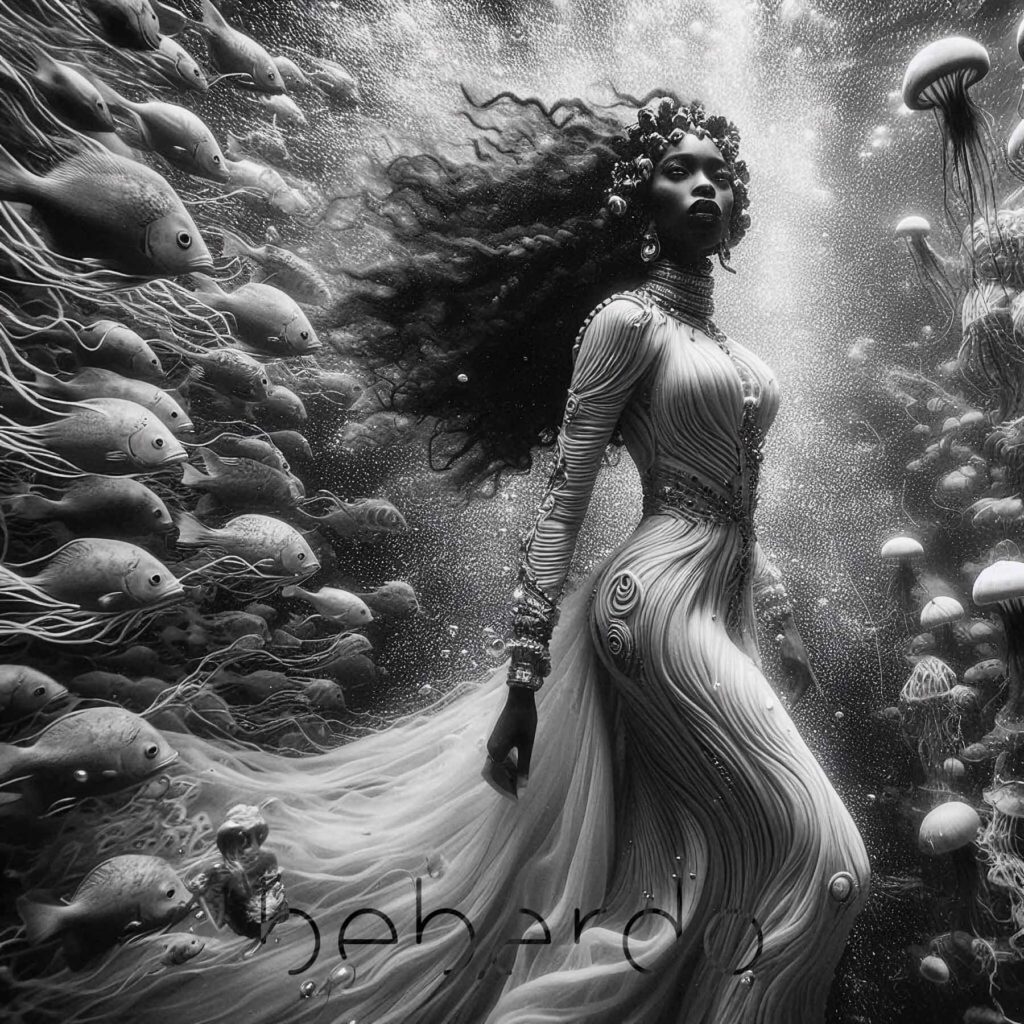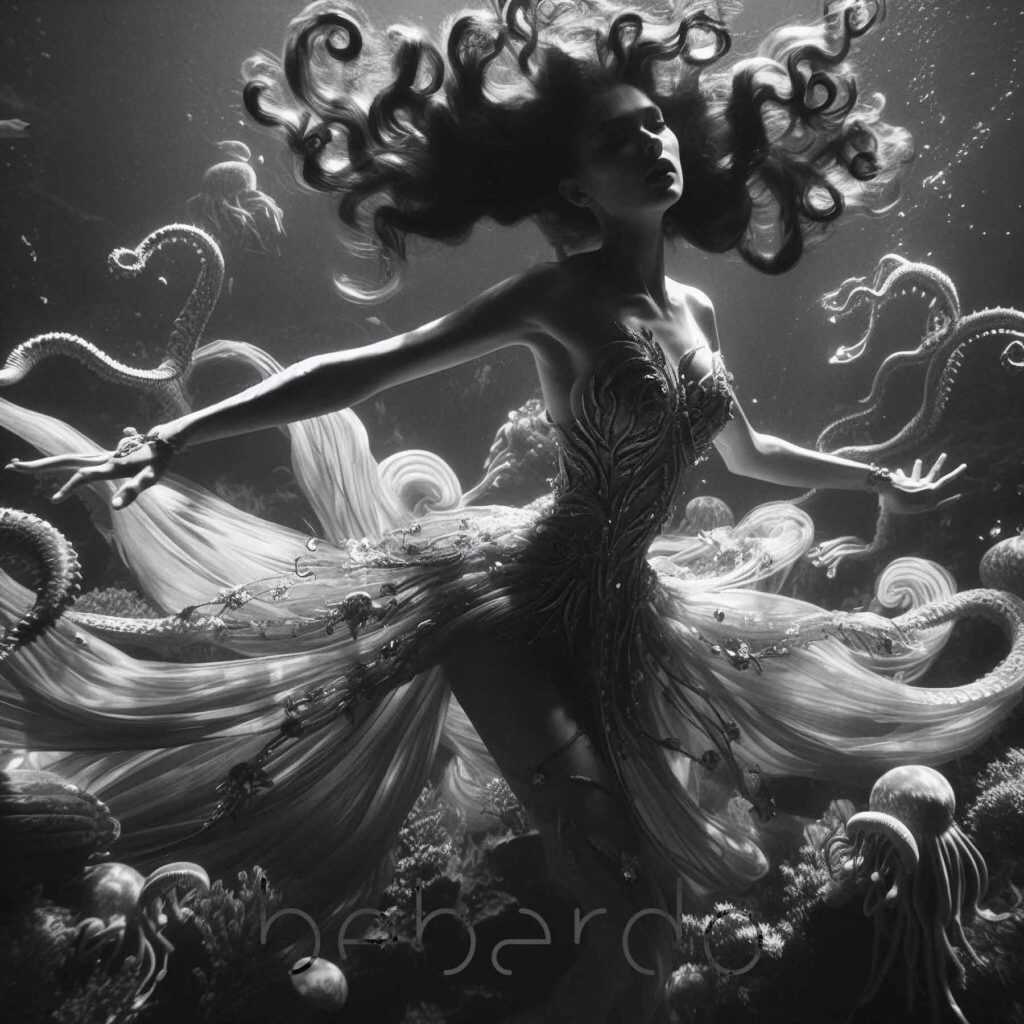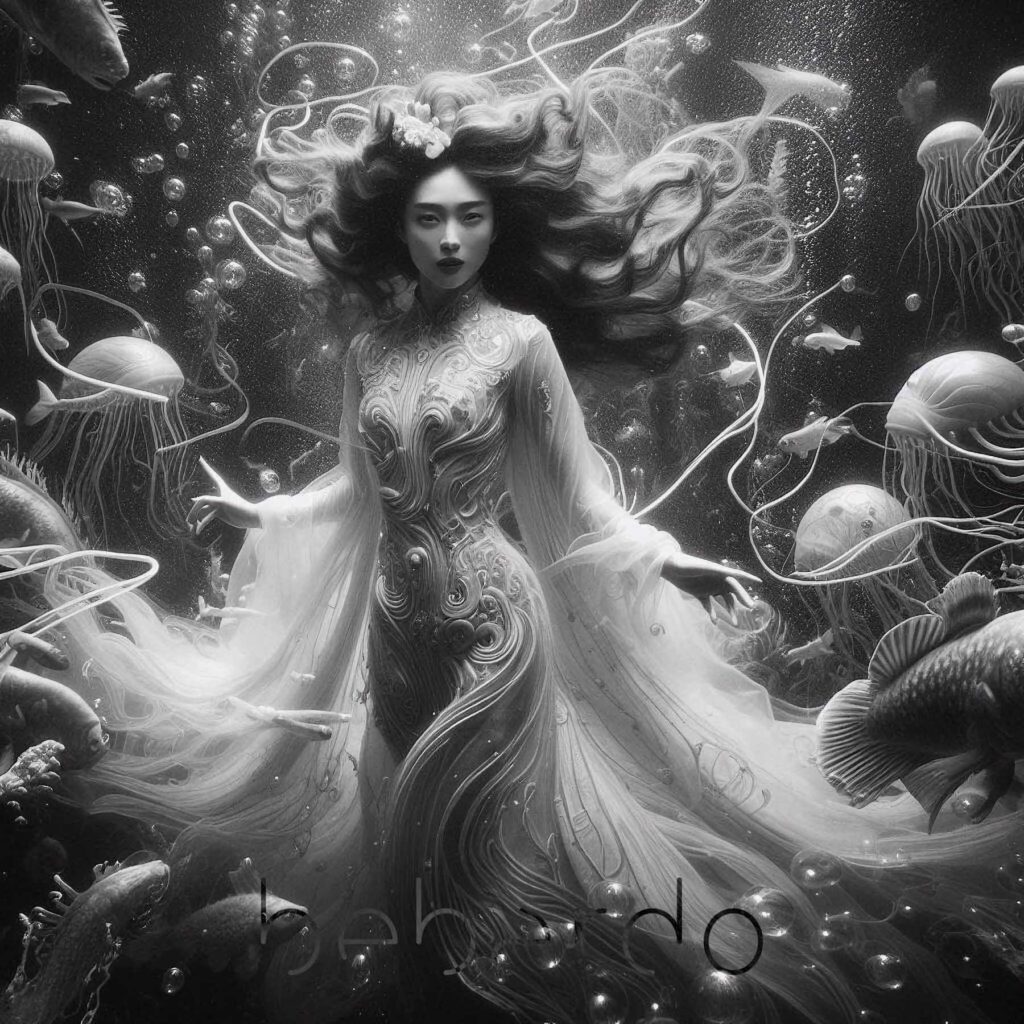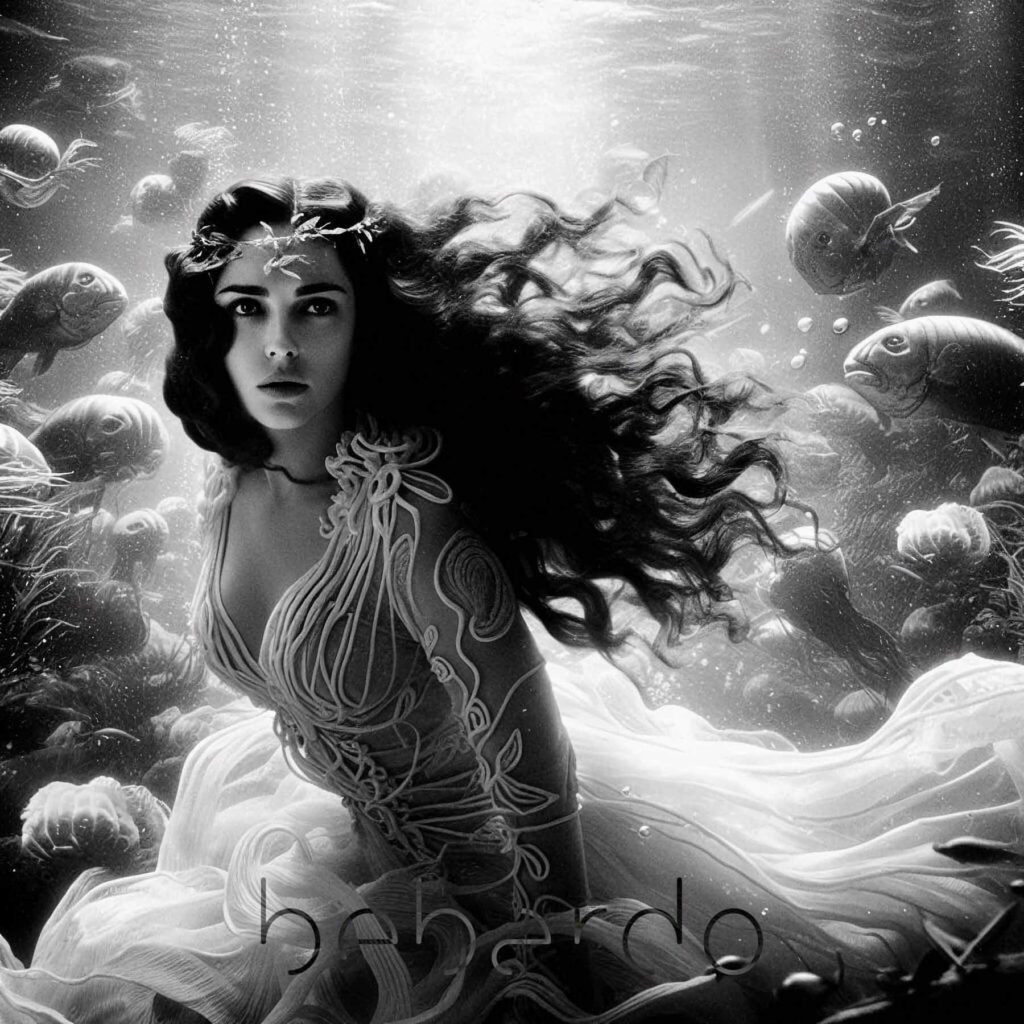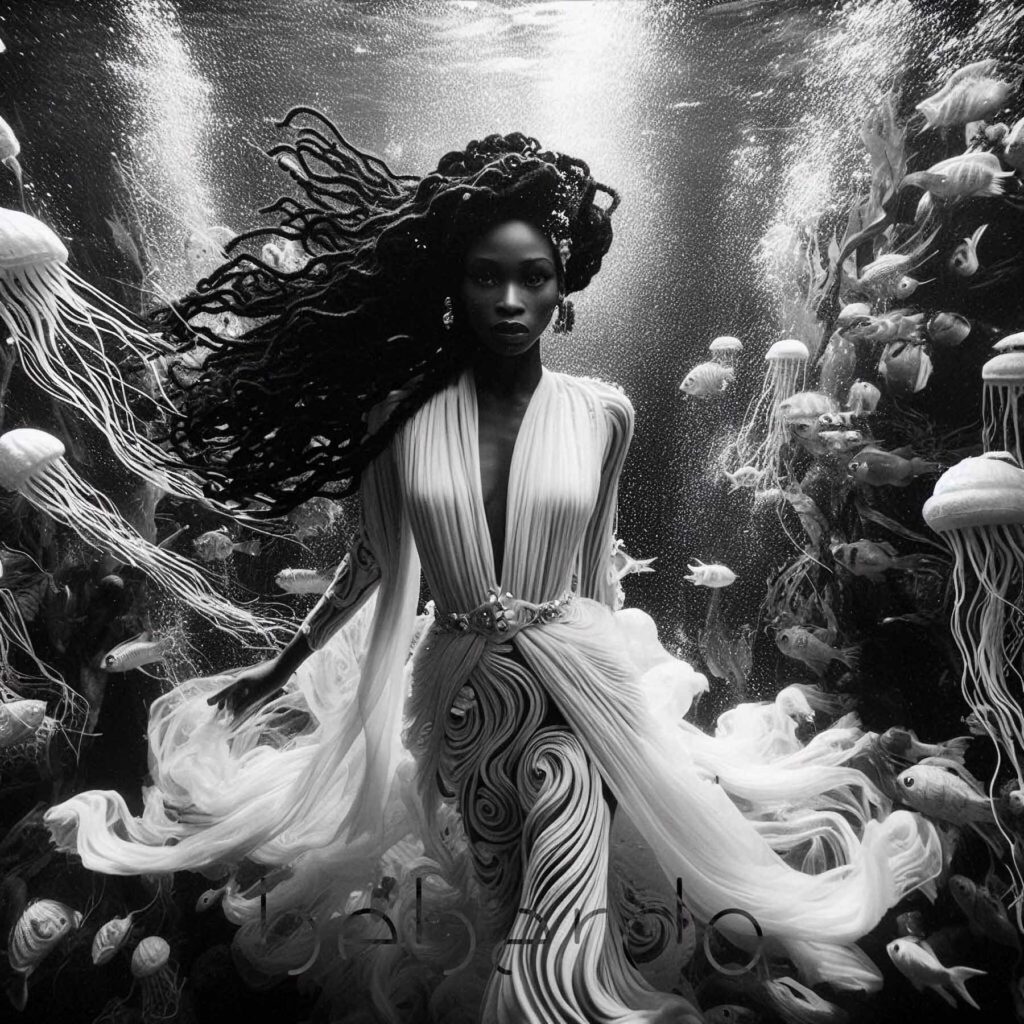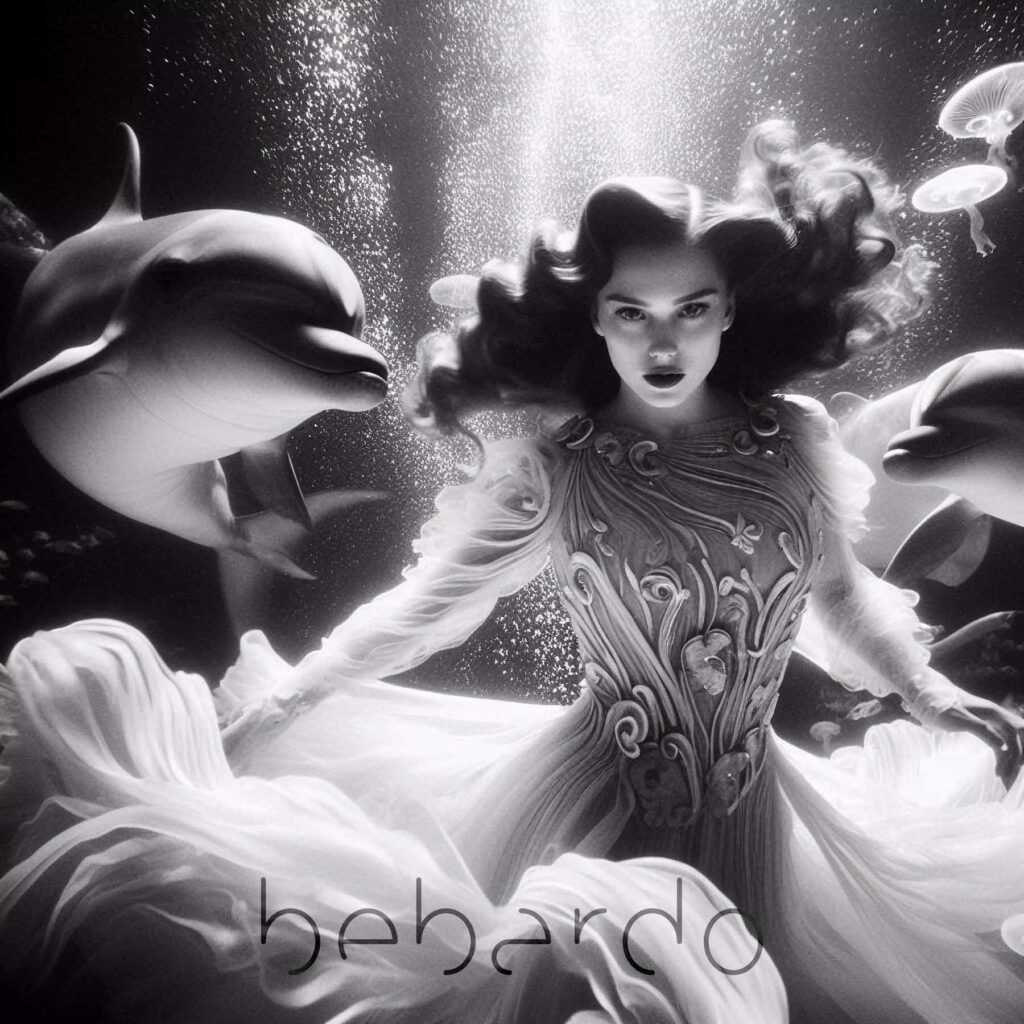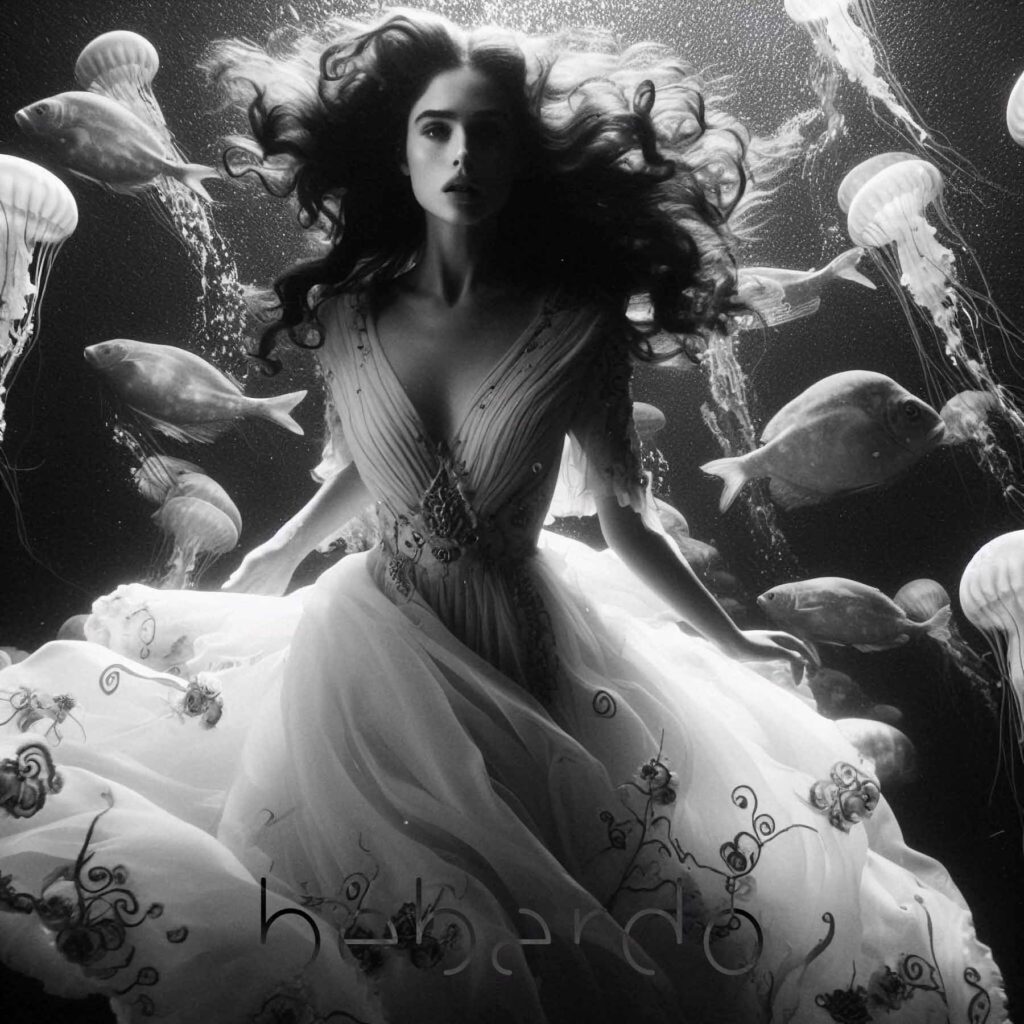OPHELIA’s
UNDERWATER ADVENTURES
They say Ophelia, the tragic figure from Shakespeare's timeless drama Hamlet, symbolizes beauty amidst 'societal constraints'. Enter Prince Hamlet, first promising to marry her, then wants her taken to a nunnery. Oh, and then he kills off her dad! Enough to drive anyone mad, wouldn't it? But... was Ophelia mad? More likely, she was utterly devastated. While there may not be concrete evidence Ophelia committed suicide, artistic interpretations may lead the public to believe this to be the case. Ophelia's demise of course was immortalized so wonderfully in the iconic painting of 19th-century Pre-Raphaelite artist John Everett Millais, depicting her sorrowful end in a stream. Her watery fate symbolized as withdrawal and silencing of marginalized voices. Bebárdo would have none of it and came up with a postscript for Ophelia, resuscitating her after she floated downstream and into the sea, letting her experience all kinds of adventures with wonderful sea creatures. Freed from societal pressure (and treacherous princes), she's able to find her authentic self and actually blossoms in her new habitat. With his background in painting and photography, Bebárdo drew inspiration from early German expressionist movies as well as 1930s Hollywood glamour, transforming Ophelia's journey from tragedy to triumph, perhaps encouraging viewers to take matters into their own hands in their own narratives. Ultimately, it was also important to make the story more inclusive and recognizable for people from all over the world.
'Ophelia' is an 1851–52 painting by British artist Sir John Everett Millais in the collection of Tate Britain, London. It depicts Ophelia, a character from William Shakespeare's play Hamlet, singing before she drowns in a river.
“We know what we are
But know not what we may be”
William Shakespeare – Hamlet
(Act IV, Scene 5 – spoken by Ophelia)

Installation of 9 art monitors (33″) with slideshows
“Beware, for I am fearless,
and therefore powerful”
– Mary Shelley –
“I must be cruel, only to be kind:
Thus bad begins,
and worse remains behind”
William Shakespeare – Hamlet
(Spoken by Hamlet – Act 3, Scene 4)














